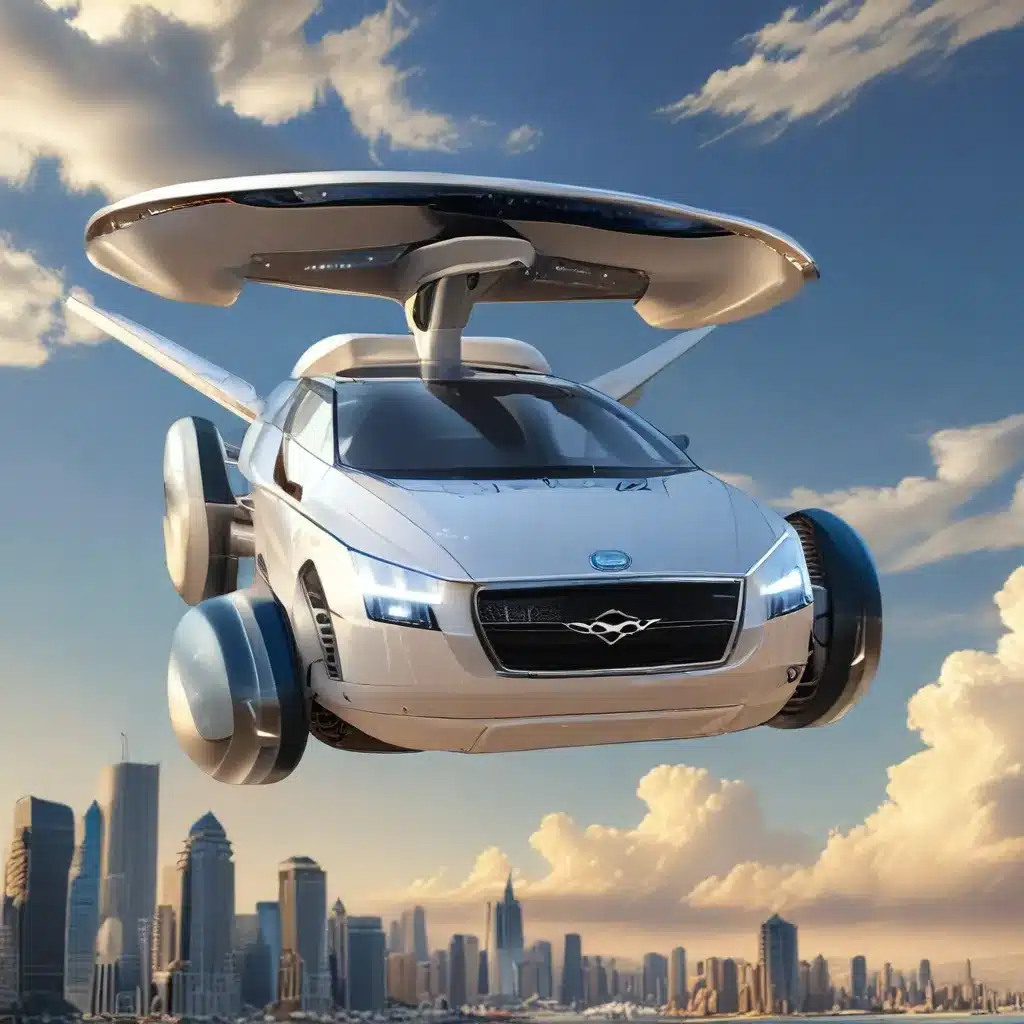A Future Straight Out of Science Fiction
If you had told me a few weeks ago that flying cars would soon change the way we travel, I probably would have laughed in your face. But when Elon Musk hinted that a flying Tesla might be in the works, the internet started buzzing with excitement about the prospect of personal flying vehicles. And now, people just can’t stop talking about it.
“There’s absolutely a sense that the time has come,” says aviation industry investment banker Joey Smith at Cassel Salpeter & Co. “Numerous well-funded companies are racing to build a viable production vehicle, and they could take to the skies as early as next year.”
It’s a bold claim, I know. But the more I’ve learned about the advancements in flying car technology, the more I’ve become convinced that the future we once only dreamed of in sci-fi movies is finally here. Of course, don’t expect to see lanes of flying vehicles lining the sky à la Minority Report anytime soon. This is going to be a slow rollout, but the potential to change the way we travel is undeniable.
The Different Flavors of Flying Cars
Before we dive in, let’s take a moment to understand the different types of personal flying vehicles out there. Because the truth is, they don’t all fit neatly into the “flying car” category.
There are STOLs (short takeoff and landing vehicles), VTOLs (vertical takeoff and landing vehicles), quadcopters, octocopters, hexacopters, and more. Some are electric, some are gas-powered. It’s a diverse and rapidly evolving field.
But for the sake of simplicity, I think it’s fair to just call them all “flying cars.” After all, that’s how the general public is starting to perceive them.
The ones generating the most excitement right now are the electric vertical takeoff and landing (eVTOL) vehicles. These aircraft take off and land like helicopters, making them well-suited for urban environments. A great example is Joby’s air taxi service in Manhattan, which plans to use its eVTOL (which looks like an oversized drone) to shuttle passengers from New York to JFK Airport starting next year.
Then there are the true “flying cars” – the ones that can both drive on the road and take to the skies. One of the most high-profile of these is the Model A being developed by Alef Aeronautics. It’s an eVTOL that looks like a sports car, but once it takes off, the passenger cabin pivots, and the vehicle flies sideways. It’s a little jarring, but undeniably cool.
And finally, you have the vehicles that don’t even bother with the road. The Lilium Jet, for example, is both a fixed-wing aircraft and an eVTOL. You won’t be seeing it cruising down the highway anytime soon – unless it’s making an emergency landing, that is.
Overcoming the Challenges
As exciting as all this sounds, the road to bringing personal flying vehicles to the masses is not without its challenges. Manufacturers have struggled with everything from designing lightweight aircraft made from the right composite materials to ensuring adequate battery life.
But perhaps the biggest hurdles have been around piloting and regulation. Issues like autonomous flight capability and pilot training have proven to be major barriers. And the regulatory landscape is, well, a bit of a mess.
The Federal Aviation Administration (FAA), which has oversight of these new vehicles, has adopted a “crawl-walk-run” approach. And right now, they’re still firmly in the “crawl” phase. Last year, they laid down some initial rules, like requiring flying cars to use existing heliports and have a human pilot. But there are no special traffic lanes in the sky for these vehicles yet.
The UK is also preparing for the flying car revolution, with the government saying it envisions eVTOLs taking to the skies within the next four years. But industry observers are skeptical of this timeline.
“The FAA is at least a decade away from allowing or approving any kind of flying car,” says Charles Leocha, president of the consumer group Travelers United, who has worked on regulations for low-level unmanned aerial vehicles for the past decade.
All of this uncertainty and regulatory hurdles have made prospective buyers hesitant to pull the trigger on a flying car purchase – if they can even afford one in the first place. Most vehicles range from $150,000 to a staggering $10 million.
“Prospective buyers are likely to hold off until regulatory barriers are dismantled,” says Francesco Cerroni, a mobility expert at the design firm Buro Happold.
Getting a Glimpse of the Future
So, if you can’t buy a flying car just yet, how can you experience this futuristic mode of transportation? Well, there are a few options.
Lift Aircraft, which manufactures a single-seat eVTOL called Hexa, is offering test flights on its vehicles this spring. The company is scheduled to be at Lakeland Linder International Airport in Florida in April and Austin in May, giving people a chance to soar through the skies in a taste of what’s to come.
And according to a recent report in The New Yorker, there are also plans for flying car demonstrations and exhibits at various air shows and technology conferences around the world.
So, while you might not be able to buy your own personal flying car just yet, you can at least get a glimpse of the future. And who knows, maybe in a few years, we’ll all be commuting to work by air, leaving the traffic jams and congestion of the roads behind.
One thing’s for sure: the future of transportation is here, and it’s looking a lot like something straight out of a science fiction movie. I, for one, can’t wait to see what the next few years have in store.
If you’re as excited about the prospect of personal flying vehicles as I am, be sure to check out https://itfix.org.uk for the latest news and insights on this rapidly evolving industry.













